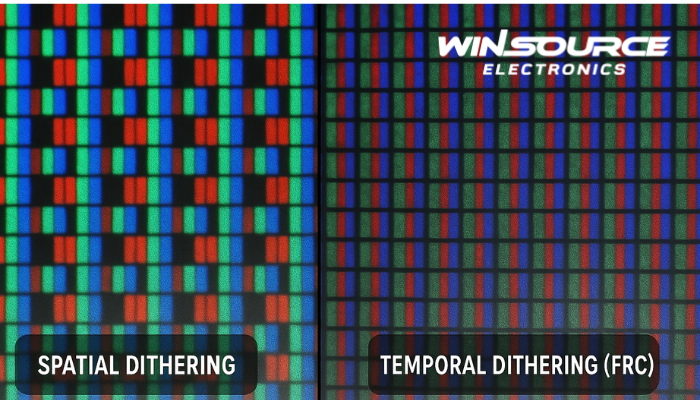
* Question
What are the two main stages of frame rate control (FRC) in display technology?
* Answer
Frame Rate Control (FRC) is a technique used in display systems to create the perception of more color shades than the hardware can natively produce. It works by rapidly alternating pixel states so the human eye blends them into intermediate colors. The process generally involves two key stages:
1. Spatial Dithering
The display assigns different gray levels or color values to adjacent pixels in a predefined pattern.
When viewed at normal distance, the eye perceives an averaged shade, effectively expanding the color depth.
This method is more effective for static images.
2. Temporal Dithering (Frame Rate Control Proper)
The display alternates pixel values across successive frames at high speed.
For example, a pixel might switch between two neighboring color levels; the persistence of human vision blends them into an intermediate tone.
This stage is particularly important for achieving smoother gradients and minimizing visible banding in motion.
Summary
The two stages of frame rate control are:
Spatial dithering (manipulating neighboring pixels within a frame).
Temporal dithering (FRC) (alternating pixel values across frames).
Together, they expand the apparent color depth of a display, enabling 6-bit panels to simulate 8-bit performance or higher.

COMMENTS